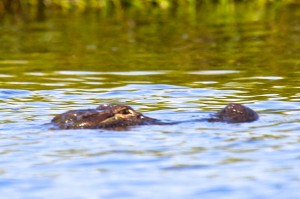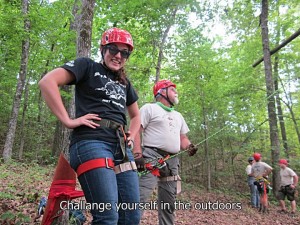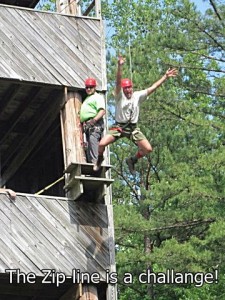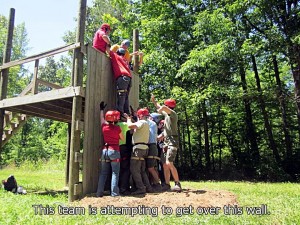Why do some people consider it unthinkable to spend time in the outdoors during colder months? Yea, it can be cold, but don’t let that stop you for enjoying outdoor adventures when the thermometer drops below 45 degrees? Consider the reverse of that situation; when that thermometer rises to high 90’s during the summer? There is not much keeping people from heading out to a mountain lake and enjoy some camping and other outdoor adventure. What about the people who head to the beach with all those other tourist? During the summer months, it is almost impossible to get a last minute camping site at your favorite camp site at Carolina Beach State Park. Yet in the colder months, you get your choice of site and if you are lucky, there are no more than a half dozen sites filled in the whole campground.
I think part of the reason is a fear of the cold and not knowing how to deal with it. I hear from people who worry that their children will get sick if they camp outside during the colder months. Granted, I’m sure this can plays a role in how we get sick, but we are probably just as likely to get sick by being cooped up inside all winter also. As a parent of three kids, my wonderful wife and I wondered the same when our kids were smaller. I also must admit that it is harder to winter camping, but the rewards and memories have been priceless.
Over this past Thanksgiving Holiday’s our family went camping once again. Each morning, it was in the upper 30’s at Carolina Beach State Park, and then warmed up into the higher 50’s on Thanksgiving Day. So in my opinion the temperatures were just perfect. Yet, we were prepared and knew what to expect in the way of weather for this adventure.
So you ask; how to you prepare for cold weather camping? Well here are a few important tips that will help you when you want to attempt to try a colder weather camping expedition.
The first tip is to make sure that you layer you clothing when you go out. Layering is the best way to stay warm as the temps cool off at night. It is also important to properly layer so that as the temps change throughout your cold weather adventures, you can adjust your layers for comfort. More layers as it cools down and fewer layers as it warms up. Remember, layering allows you to control your warmth level by adjusting your clothing. Another important fact is that you can also have too many layers on. You can get warm quickly by properly layering but you can also get over heated quickly. Why over heated? Because with too many layers you will begin to sweat and once you start sweating, your clothing gets wet. With these damp or wet clothing from sweat, as the temps drop you will get colder. If you have a full day of activities planned, you may want to change clothing, getting out of the damp sweaty clothing.
Another part of layering is to stay away from cotton clothing in the winter months. Why? Because cotton dose not wick away your sweat, causing your clothing to remain damp. So when you are packing make sure you pack plenty of clothing that will keep you dry. Clothing made out of quick dry nylons, polypropylene, suplex, polar fleece, wool, thermax and other materials are great for layering.
When getting in your sleeping bags at night, also remember the layering principle. On cold weather adventures with my scouts, often I hear the next morning that a scout was cold. When asked what he wore to bed, I get this layer and that layer of clothing, or the clothing I wore yesterday. WRONG answer. The same layering principle applies when sleeping. First, find out what your sleeping bag is rated for. A 30 degree bag is designed to keep a person warm down to 30 degrees. The problem is that too often what happened is people will have two layers on and then get into their bag and get warm quickly. In the middle of the night the bag gets damp from the sweat and you get cold. In most instances a single layer of dry clothing or long underwear worn in the bag is just fine.
One last thing, dry socks are critical to saying warm. Don’t make the mistake of wearing the same socks you had on that evening in your shoes to bed. These socks are damp and your feet will get cold. We teach our scouts to take off their socks, dry their feet and place on dry socks. When you do this, you will be surprised how warm your feet stay.
The second important item to have is a good sleeping pad. A good sleeping pad between you and the ground is critical. You can have a 5 degree bag and still get cold without insulation between you and the ground. A good closed cell pad or a Therm-a-Rest type backpacking pad are great to use. If you don’t have one of those, you can use wool blankets or even several comforters from you linen closet at home will also work. The key here is getting a good layer of insulation between you and the ground. One last thing about standard air mattresses, they do not insulate you against the cold from the ground. These types of mattresses will allow the air in them to get cold, creating cold mattress for you to sleep on.
Third thing to have is a pair of warm gloves and a warm hat to wear. I typically carry two winter type hats to wear, one for the day’s activities and one to wear at night, even while sleeping. Enough said.
Lastly is a warm fire and warm drink. Having a nice warm cup of hot tea or hot cocoa by the fire at night is warming and cozy. The added benefit is that the fire is something special at camp that no camping adventure is complete without. You don’t have to have a huge bonfire to keep warm, but plan accordingly. Remember don’t let your fire burn unattended in camp, even when you head to the tents for sleep.
Check out Campmor.com for all your family camping gear, click here for a Campmor coupon.
So, are you ready to give a Family Camping Adventure a try in the colder months? If so contact Mahanaim Adventure and we can help you have a fantastic and safe cold weather camping adventures!





